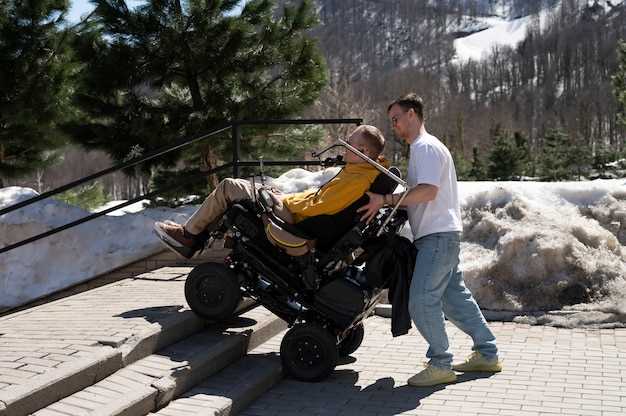
All-terrain vehicles (ATVs) offer an exhilarating way to explore the outdoors, and riding with a passenger can enhance the experience. However, ensuring safety while riding double is paramount. Proper preparation and understanding of ATV dynamics in tandem operation can help minimize risks and ensure a fun outing. It is essential to familiarize yourself with the specific guidelines related to riding with a passenger, as this can significantly affect stability and control.
When riding with a passenger, communication between the driver and the person seated behind is crucial. Both riders should establish signals and confirm their understanding of safety protocols, including how to distribute weight effectively to maintain balance. Passengers should also be instructed on proper body positioning and how to hold onto the driver securely, as this will aid in maintaining stability while navigating various terrains.
In addition to communication and positioning, it is vital to adhere to the manufacturer’s recommendations regarding weight limits and passenger guidelines. This ensures that the ATV remains within safe operational parameters and reduces the likelihood of accidents. By following these safety tips and educating both riders on proper technique and awareness, you can enjoy a thrilling ride that is both fun and safe for everyone involved.
Choosing the Right ATV for Tandem Riding

Selecting the appropriate ATV for tandem riding is crucial for ensuring both rider and passenger safety. First and foremost, look for an ATV designed with a two-person configuration. These models typically feature a larger frame, enhanced stability, and additional safety features tailored for dual users.
When assessing various options, prioritize ATVs equipped with passenger handholds and footrests. These additions not only enhance comfort but also help secure the passenger during the ride, which is essential for maintaining balance and safety, especially on uneven terrain.
Engine power is another important factor. An ATV with adequate horsepower will allow for smooth acceleration and handling, even with a passenger on board. This ensures that the rider can navigate various terrains without compromising stability or safety.
Additionally, consider the overall weight capacity of the ATV. Manufacturers typically provide guidelines on maximum load limits. Adhering to these specifications is vital to prevent accidents due to overloading, which can significantly impact control and handling.
Finally, it’s advisable to test ride potential ATVs to evaluate comfort and handling with a passenger. This hands-on approach allows both the rider and passenger to assess the vehicle’s responsiveness and overall ride quality before making a decision.
Proper Safety Gear for Passengers on an ATV
When riding tandem on an ATV, ensuring the safety of the passenger is paramount. Proper safety gear greatly reduces the risk of injury in case of an accident. The first essential item is a DOT-approved helmet. It protects the head from impact and should fit snugly without obstruction of vision.
Next, the passenger should wear protective eyewear. Goggles or face shields prevent debris, insects, and dust from entering the eyes, which can be hazardous during a ride. Full-coverage goggles are ideal as they provide a complete shield from wind and flying objects.
Appropriate clothing is also critical. Long sleeves and long pants made from durable materials help protect the skin from abrasions. Avoid loose or baggy clothing that can get caught in the machinery while riding. Sturdy gloves protect the hands and provide better grip on the vehicle.
Footwear plays a significant role in safety. Sturdy, closed-toe boots with good ankle support should be worn to protect the feet from potential hazards. Sandals or sneakers are not suitable choices as they lack the necessary protection and grip.
Moreover, a properly fitted harness or safety strap is vital for the passenger. This equipment ensures that the rider remains securely in place, particularly on uneven terrain or during sudden maneuvers. Never let passengers ride without such safety devices to prevent falls.
In summary, equipping the passenger with the appropriate gear – a helmet, eyewear, protective clothing, secure footwear, and a safety harness – is essential for a safe and enjoyable ATV riding experience. Prioritizing safety gear not only protects passengers but enhances their overall riding experience.
Communication Strategies for Safe Tandem Riding

Effective communication between the driver and the passenger is crucial for safety while riding tandem on an ATV. Here are several strategies to enhance communication during your ride:
-
Pre-Ride Discussion:
Before setting off, discuss the ride plan, including signals for acceleration, deceleration, and stopping. Outline how to handle any potential hazards.
-
Establish Clear Signals:
Use hand signals or verbal cues to communicate essential actions. For example, a thumbs-up can indicate readiness to go, while two fingers down can signal slowing down.
-
Maintain Awareness:
Both the driver and passenger should stay vigilant about the surrounding environment. Regularly communicate any obstacles or changes in terrain.
-
Utilize Communication Devices:
If available, consider using Bluetooth headsets or walkie-talkies to facilitate real-time communication without yelling over engine noise.
-
Practice Calmness:
Stay calm during the ride. If either party feels uncomfortable, use agreed signals to pause or stop the activity.
By implementing these strategies, both the driver and the passenger can enjoy a safer and more enjoyable tandem riding experience on an ATV.
 Skip to the content
Skip to the content 